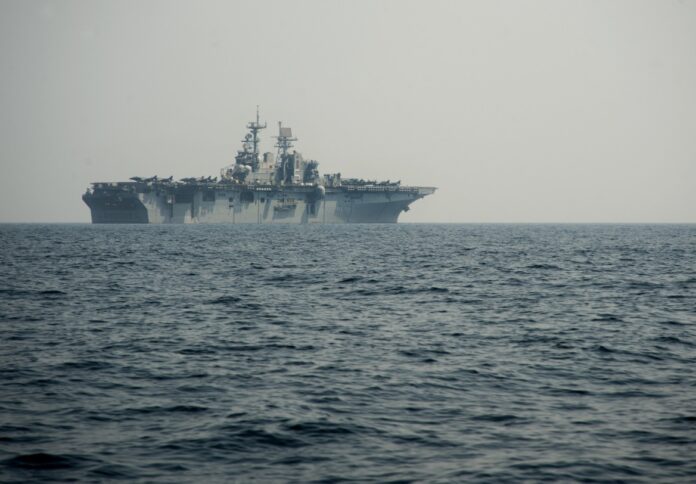
The crew of the USS Bataan (LHD 5) has recently completed the first metal 3D part fabrication and replacement for a de-ballast air compressor (DBAC) in only five days utilising a permanently installed metal 3D printer, with the help of the Naval Sea Systems Command (NAVSEA).
A sprayer plate is a component of a DBAC, which is used to drive pressurised air through saltwater tanks to release the salt water that has been collected.
The tanks are filled in order to reduce a ship’s draught during amphibious operations. Producing the sprayer plate while at sea allowed the ship to reduce the time it took to get a new unit.
“This success story shows the self-sufficiency we can achieve when our Sailors are provided with cutting-edge technology,” said Rear Adm Joseph Cahill, commander at Naval Surface Force Atlantic (SURFLANT).
“The impact technology like this can have on operational readiness, particularly in a combat environment where logistics capabilities will be challenged, is critically important,” Cahill added.
In particular, SURFLANT and the NAVSEA Technology Office collaborated to install the printer, which features the Phillips Additive Hybrid system, which integrates a Meltio3D laser metal wire deposition head on a Haas TM-1 computer numerical control mill.
The printer, installed under a joint effort between SURFLANT and the NAVSEA Technology Office, includes the Phillips Additive Hybrid system, which integrates a Meltio3D laser metal wire deposition head on a Haas TM-1 computer numerical control mill.
The Haas TM-1 platform has shown to be reliable in afloat environments aboard multiple aircraft carriers.
When compared to traditional machining, integrating the Meltio 3D deposition head with the Haas TM-1 enables both additive and subtractive production capacity inside the same system, enhancing efficiency and minimising waste.
The repair operation, led by Machinery Repairman First Class Mike Hover, began with the creation of a computer-assisted design (CAD) model of a sprayer plate from one of the ship’s other DBAC systems.
Hover used NAVSEA’s ‘Apollo Lab’ build for engineering and fleet support and training after generating a prototype CAD model.
In 2018, NAVSEA built the “Apollo Lab” to better serve forward-deployed sailors as well as assist the fleet by creating additive manufacturing components for use by sailors at sea.
The lab, managed by NAVSEA field activities Naval Surface Warfare Centre, Carderock Division, Johns Hopkins University Applied Research Laboratory (JHU APL), and Building Momentum, offers civilian engineers with dispersed, reach-back engineering assistance for AM equipment.
Bryan Kessel, a mechanical engineer at the Naval Surface Warfare Center’s Carderock Division, refined the CAD file, collaborated with JHU APL to create software instructions to guide the metal 3D printer’s operation, and securely transferred those instructions back to the ship to produce and install the sprayer plate.
NAVSEA is the Navy’s largest system command, in charge of the purchase, maintenance, and modernisation of ships, submarines, and systems for the US Navy.



















